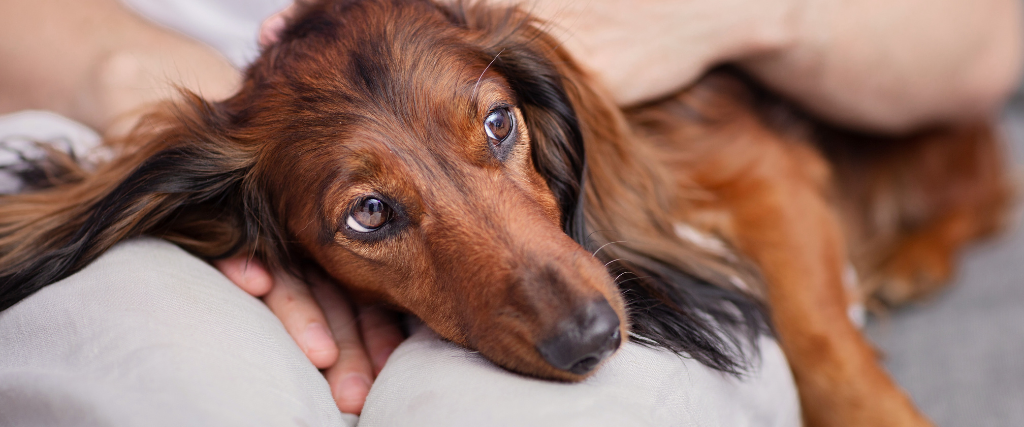Intervertebral Disc Disease (IVDD) is a disease that can affect any creature with a spine. In small animal veterinary medicine, it is commonly seen in dogs with long backs such as the Dachshund, Corgi, Beagle, and Basset Hound. The back is divided into three regions: cervical (neck region), thoracic (over the rib cage), and lumbar (lower back). The back is also made up of bones called vertebrae. In between each vertebra is an intervertebral disc. These fluid-filled discs act as shock absorbers by helping displace the weight load on the spine during our daily activities.
What Causes Canine Intervertebral Disc Disease?
Canine intervertebral disc disease occurs when a disc in your dog’s spine ruptures or herniates. This causes leaking of the disc fluid, pain, and severe inflammation. Once the disc ruptures or herniates it can no longer act as a shock absorber or help with the weight load on the spine. The side effects of IVDD are serious, and the symptoms will vary depending on where the disc ruptures or herniates in the spine.
When a disc herniation or rupture occurs, it is important for medical attention to be sought. The condition is very painful, and if left untreated, the dog can become paralyzed. Possible symptoms include stiffness of the neck, back pain, crying when handled or picked up, shivering, reluctance to play or run, weakness in the limbs, an unusual gate, and paralysis.

How Is IVDD Diagnosed?
A diagnosis of IVDD is made with a thorough physical and neurological exam and chest diagnostic imaging such as x-rays, MRI or CT Scan, or a Myleograph (injection of dye into the spine). Once a diagnosis is made, treatment can begin.
Types Of Treatment Options For IVDD
Treatment options depend on the severity of the clinical signs that the patient is exhibiting, the location of the herniated or ruptured disc, and cost. Some dogs can be managed with medications and strict cage rest. The medications used will help decrease the swelling and relax your dog’s muscles. Surgery is another option in some cases. This can be very expensive, but in some cases, due to the location of the herniated or ruptured disc, it is the best option. Finally, acupuncture is another effective treatment option.
Over the years, I have treated a number of dogs with a combination of medication and acupuncture. One dog that I treated recently was a Dachshund named Fargo. Fargo was originally seen at an emergency clinic for acute onset of pain. It was determined that Fargo was having neck pain, which was later confirmed on x-rays. He was started on pain medication and muscle relaxants and put on cage rest. Fargo was still having pain after the weekend, so after a discussion with the owner, we decided to add acupuncture to his treatment. After two treatments, Fargo improved and made a full recovery.

Another Dachsund mix that had back issues was a dog named Winny. He had an acute loss of use of his left hind leg. Radiographs showed issues in Winny’s lumbar spine. He was started on medication and rest. Over the next couple of days, Winny did not improve and still seemed painful. We started acupuncture on him and saw rapid improvement during his treatments. He has also made a full recovery.
Reach Out For Support From Your Veterinarian
Intervertebral Disc Disease doesn’t need to be a death sentence for most dogs. In many cases, with quick diagnosis and intervention, a positive outcome can occur.

